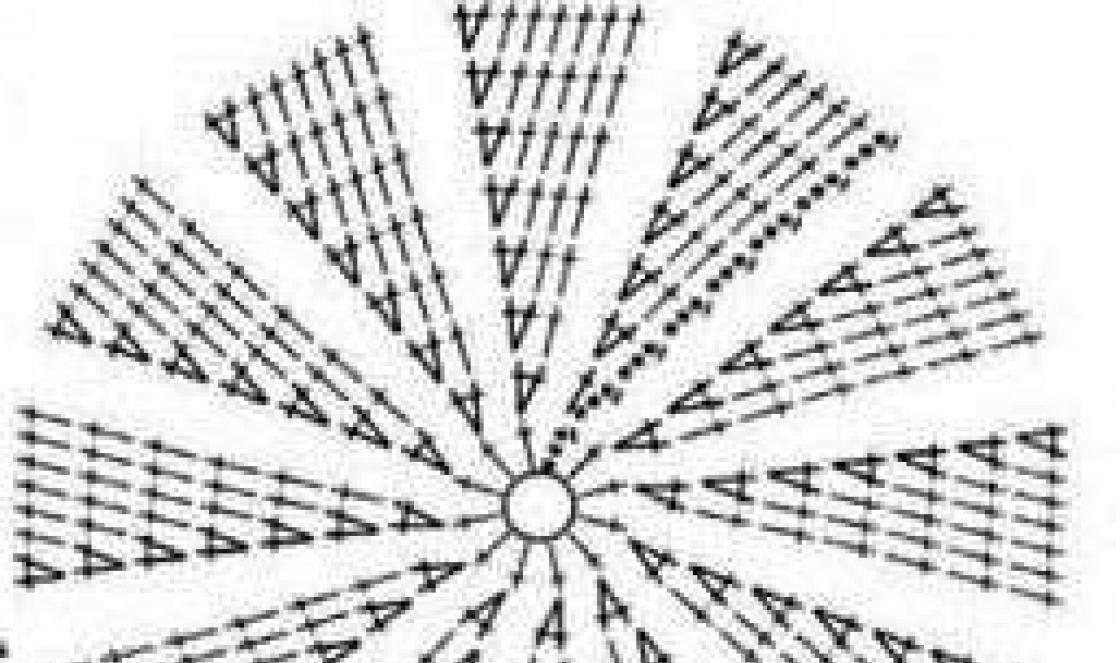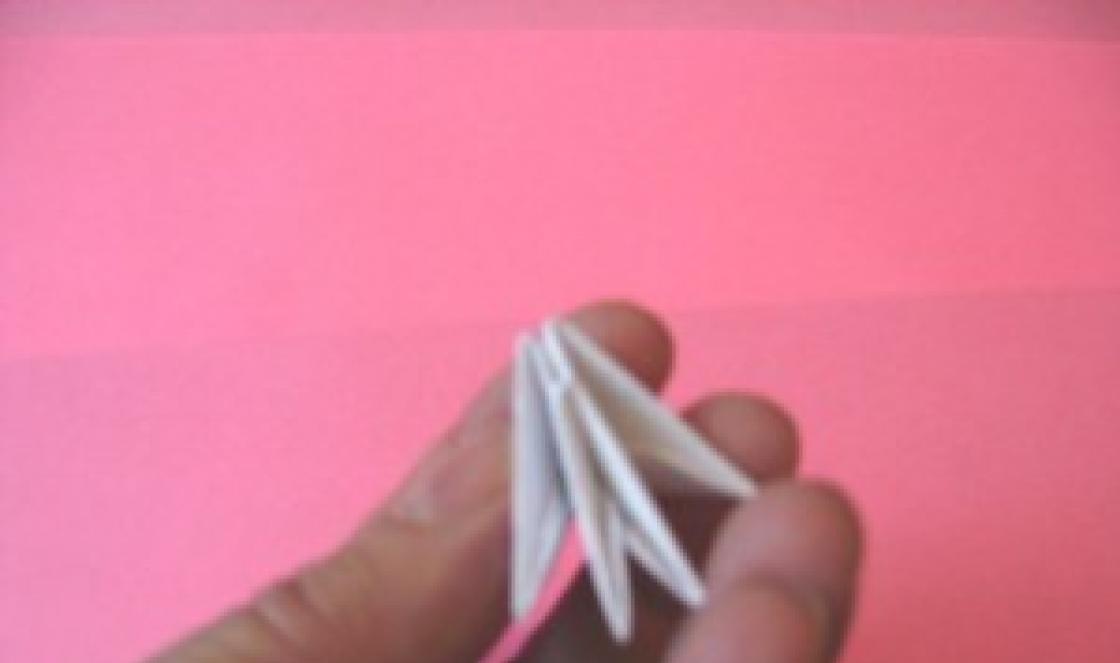In this article we will look at how to hold a guitar and what landing when playing the guitar correct.
Guitarist's seat.
There are several positions for playing the guitar:
- foot to foot (+ flamenco)
- regular fit
- classic fit
Let's start with the fact that the performer should be comfortable sitting and playing the guitar. A common and comfortable position is when we cross one leg over the other. The correct thing to do is to cross the right over the left, which is more common, with the guitar placed on the right leg. You can also throw the left one over the right one; here the body of the guitar rests on both legs.
Cross-legged landing Provides a stable position for the guitar and prevents it from dangling from side to side. Another variation of this position is when the right leg is bent and the right ankle is placed on the knee. This position is common in the flamenco style of performance.

Regular fit is considered unstable, since the guitar, located on the right leg, has only two points of support: the leg and the right hand. And when sitting cross-legged: leg, right arm and chest, which provides the guitar, as mentioned above, with a more stable position. In order for the usual landing to become stable, you should add a third point of support - emphasis on the chest. This is achieved by raising the right leg, or using a footrest or low chair.

Classic fit.
In the classic position, the guitar is placed on the left leg, with a stand placed under the foot. The head of the bar should be at eye level. This is done, firstly, in order to open access to the entire neck, and secondly, to ensure a stable position of the guitar. It is in this landing that three points of support are achieved: left leg, right arm, chest.

VIDEO LESSONS CYCLE: COMMON MISTAKES WHEN PLAYING THE ELECTRIC GUITAR. VIDEO LESSON: “How to hold a guitar. Correct landing"
In this lesson we will discuss such a fundamental topic as proper seating with an electric guitar. Let's figure out how to hold it correctly and how to place it: on which leg, at what angle in relation to the body, to the horizon, where to bend it, turn it, etc.
These are fundamental things and many people who play don't know about them. Because of this, they experience a number of problems. For example, there is not enough stamina, pain begins. A person thinks that he will sit longer, train, and the tension will go away. But, unfortunately, this does not always happen. Often tension is eliminated by correct fit. We will now look into what a correct landing is.
I tell students how to hold an electric guitar correctly during their first lesson. That is, the person came, we met. I outline the concept of how my classes are structured. After discussing the theoretical points, the actual practice begins with landing.
To properly fit the guitar, we deal with two angles:
1. The angle of the guitar neck relative to the horizon.
2. Turn the guitar towards the shoulder girdle.
Angle of inclination to horizon
We take a parallel surface to be the horizon. For example, gender. If the guitar is parallel to the plane, the degree of tilt is zero. The angle of inclination between the neck and the soundboard is determined by the balance. Take the guitar, keep your back straight so that there is no slouching. We don’t lean the guitar on top of ourselves, but lean it slightly so that its horn just touches the T-shirt. The balance position is achieved through the correct position of the instrument and the friction force of the horn. With proper balance, it lies stable and does not fall, even if you swing your leg. In a normal position, she does not nod. Specifically on my guitar the angle is 20 degrees to the horizontal. On other guitars the weight distribution may be different. The angle of inclination may vary.
Angle relative to the shoulder girdle
After the degree of inclination to the horizon has been found, we take the hand with the pick and touch the bridge with the edge of the palm. More precisely, where the strings leave the bridge, the damper zone crosses all 6 strings. We lightly touch the body of the guitar with our forearm, and tension begins to accumulate here in our shoulder. The muscle is tense and becomes stiff. To remove this tension, you need to press your elbow towards you. The guitar turns naturally. The shoulder joint moves forward. By turning the guitar along the axis until the tension disappears, we find the angle relative to the shoulder girdle. It can be more or less, based on your own feelings of comfort.
Position of the right hand
The edge of the palm of the right hand must be placed on 6 strings. This is done not by lifting the shoulder joint, but by rotating it. Shoulder elevation creates tension and can negatively impact endurance and play. Not all people can play this way. Some people find it convenient to slightly raise their shoulder. If you look at Gilbert and Petrucci in the video, you'll notice a skew. This does not mean that they sit like this for 3 hours with a guitar, but at the time of filming it was convenient for them. Some people need an even position of the shoulder joints, but the main thing is to understand the mechanism and know how to do it correctly.
Our task is to move the edge of the palm to the damper zone. To do this, relax your hand. With your left hand, grab your right shoulder joint to prevent it from rising. When you raise your arm, the joint moves forward slightly. Thus, the hand is moved to the desired point not by lifting, but by rotating the joint. The hand is pressed against the body, taking a comfortable position with the electric guitar.
The shoulder joint of the left hand does not pull back if the right one comes out in front. The resulting distortion will cause the hand to pull the bar towards itself. The underlying strings will be pinched, not muted. To avoid tension, keep the shoulder girdle in a natural position. Shoulders can move forward and down for increased comfort.
Once you learn how to hold an electric guitar correctly and produce sound, you can play however you like. This will not affect the ergonomics of the guitarist, but only if the first landing is done correctly. The main requirement is to remove the tension that a novice guitarist already has enough of. Guitarists who are used to holding the guitar incorrectly can play for years and hope to build up the stamina to become comfortable playing. In fact, to solve the problem you just need to turn the guitar and change the angle of the shoulder joint. In each case, the angles are selected individually.
An acoustic guitar is a power musical instrument, which means that when playing, the musician needs to make some effort. For example, for clamping strings on the fingerboard. Therefore, it is necessary to start learning the game with the correct landing.
The position for the game should never be underestimated. She helps:
- redistribute body energy;
- reduce the load on your hands;
- relieve tension from your back;
- simplify the execution of complex techniques;
- develop proper breathing.
All this leads to the fact that the process of playing the guitar becomes not only simple, but also enjoyable. Of course, at first you will feel very uncomfortable and unusual. If you already have a guitar, then you have probably tried to play it while sitting in any position the way you are used to sitting every day. However, this is wrong, and below we will look at the most common mistakes made by beginners.
What should you avoid?
The guitar is perhaps one of the most freedom-loving musical instruments, providing enormous opportunities for self-expression. The history of the world stage knows many cases when one or another musical genre dictated its own rules. Thus, hippies play while sitting on the ground with their legs folded Arabic style, while rock stars play while standing, holding the electric guitar at hip level. Just remember the famous Vladimir Vysotsky, who also played standing, but held the guitar higher, at the waist.
In other words, every guitarist plays the way he is comfortable. The pose allows not only to simplify the technique of playing, but also to convey the character of the performer, and at the same time, all professional musicians, without exception, first mastered the basic techniques and methods, and only then developed something of their own.
As a beginner, you will need to show a little effort on yourself and, so to speak, “get out of your comfort zone.” Forget for a while about soft sofas and armchairs, and come to terms with the idea that in the next few months your rehearsals will take place on a stool or on a chair without a back. Once you have mastered your own technique, you can play however you like (sitting, standing, lying down), but for now it is very important to master the basics.
Two main positions
So, there are two landings to choose from, which are the basis of the basics:
- classical;
- modern.
In both cases, you will need a special footrest, which you can purchase at a musical instrument store. If you don’t have anything like that, then you can use the means at hand: a shoe box, several thick volumes, a small wooden box - whatever.
In the classic pose, the performer places the “waist” of the guitar on his left leg, which is placed on a stand. In this case, the bar is raised at an angle of approximately 45°. The left arm, bent at the elbow, is located approximately at shoulder level. The right one is placed on the shell, and the hand is located near the voice box.

The modern pose is more free and comfortable. In this case, the musician places the guitar on his right foot. You can also use a stand here to help elevate the guitar and reduce strain on your hands, but this is at your own discretion. If you feel like you're getting tired quickly, try adjusting the height to suit you (add/remove a couple of books). With this position, the neck of the guitar does not look up so much, and its position is closer to horizontal. The musician's left hand is moved more to the side and moves freely (maximum access to the frets). Don't stick your elbow out, but don't press it toward your waist either.
Whatever position you choose, try to keep an eye on a few basic aspects:
- keep your posture. By slouching, you are tightening your diaphragm, which will make it much more difficult to sing with a guitar;
- breathe evenly. Don't hold your breath. Lack of oxygen will lead to yawning and difficulty breathing;
- relax. The more you tense your muscles throughout your body, the faster you will get tired when playing. Try to relax your shoulders, legs, arms and back. Playing the guitar should be fun, not a test of endurance;
- give yourself a rest. A small warm-up once every half hour will charge you with the necessary energy, allow you to relax and relieve tension. Stretch your neck muscles, roll your shoulders, squat, do push-ups.
Instructions
First, choose a chair suitable for playing. It should be such that when sitting on it, your thigh should be parallel to the floor. In case you want to use the landing, you will need a footrest. Typically this is a structure with a height of 5-10 cm and a surface area sufficient to place a foot on it.
Sit on the edge of the chair, so that you are comfortable. For classic exercise, place your left foot on the footrest. Your knee will thus be elevated. Place it on your left leg. Your right foot should be moved to the side at a distance sufficient for the body of the guitar to rest comfortably and steadily against your feet. Bring your body closer to your body. In this case, the soundboard of the guitar during playing should be perpendicular or almost perpendicular to the plane of the floor. Find a position that is comfortable for you. Try to keep your back straight.
If you want to use a non-classic fit, then you won't need a stand. Place the guitar with the notch of the shell on your right leg. All other recommendations are similar to those given for the classic landing.
Place your right hand on the body of the guitar so that your palm is positioned above the strings in the area of the soundhole (about half obscuring it). The elbow of the hand should be approximately at the junction of the shell and the upper deck. Adjust the position of your hand so that it is comfortable for you.
The fingers of the right hand should stand on the strings, while being only slightly curved at the joints.
Place your left palm around the neck of the guitar. The correct position of the left hand is when the palm touches the fingerboard only with the pads of the “playing” fingers (or, when using the barre technique, with the entire surface of the finger) and part of the surface of the thumb.
The thumb, located on the back of the bar, should not fall too low or rise too high. Moreover, it should not appear above the upper edge of the fingerboard.
Video on the topic
Sources:
- "Guitar. Lessons from a master for beginners", D. Ageev, 2009
An electric guitar is an electronic type of plucked string musical instrument. Despite a large number of similar features (notation system, number and tuning of strings, basic playing techniques), the electric guitar also has differences, including in the manner of holding the instrument.
Instructions
The neck, like a regular one, is on the left, above the body. It should be at such a height that the left arm, bent at the elbow, can move freely along it without experiencing tension. The fingers, except the thumb, are on the outer (visible to the audience) side of the fingerboard.
Unlike the classical setting, where the thumb strictly rests on the middle of the neck from behind, on an electric guitar it is allowed to completely wrap around the neck. The tip of the thumb may be visible from behind the fingerboard and may even bend slightly at the knuckle. In addition, a strong bend in the wrist is allowed, especially in some techniques. Comfort plays an important role here: if you feel pain, it means you are doing something wrong.
The position of the right hand also has significant differences. Unlike classical, the brush can touch the strings, for example, when muffling with the edge of the palm. In addition, the mediator technique is more often used rather than the finger technique. The position of the hand depends on the specific playing technique. It is also permissible to move the hand along the body to give a specific color (in the classics it is necessary to hold the hand strictly above the resonant hole).
Allowed to hold electric guitar horizontally (with hands on the lower deck, like on a person's back), vertically, or in other non-standard positions. However, such positions are rather acceptable as a stage effect and are possible only with good knowledge of the part and the ability to perform it “blindly”.
Video on the topic
The sound quality when playing any instrument largely depends on the placement of your hands and the ability to take the correct posture. Of course, rock music performers sometimes take the most incredible positions while playing, as do flamenco virtuosos. But a musician can choose the optimal position of the body and hands once he masters the technique. It’s better to start with the pose adopted by performers of classical guitar music.

Where to begin
Before you start learning, you need to become thoroughly familiar with the instrument. Try tuning your guitar. It is better to do this yourself from the very beginning, especially since finding an electronic tuner is now not difficult, as well as a tuning scheme. You may need to adjust the height of the neck, sharpen the saddles, etc. In short, the guitar should be ready for practice, just like the musician himself. To learn how to hold a classical guitar correctly, you will also need a low stool. You can buy it where they sell tools, or. At first, improvised means will do - a stack of books or a small wooden box. The height of the stand should be approximately 15-20 cm. Some guitarists order inclined stools so that the heel and toe are at different heights.Guitarist pose
Sit on a chair. It must be strong enough and stable. It is better to choose a chair with four legs. The chair is not suitable because it is difficult to sit upright. Lean forward a little. Pay special attention to the position of your shoulders. They should be free, just like your hands. Tension not only interferes with proper sound production, but can negatively affect your health. Place your left foot on the stool. The leg should be stable. At first, this position may not seem very comfortable, but very soon you will get used to it.Guitar position
Take your guitar. Place it with the cutout on the thigh of your left leg, standing on a stool. The bar should be in your left hand, unless, of course, you are left-handed. The head of the bar should be at the level of your left shoulder. The neck should be positioned so that, turning your head slightly to the left, you can clearly see even the first frets. Move your right leg slightly to the side. The distance is determined empirically. In any case, the guitar must be stable. Men and women who play classical guitar sit slightly differently. A woman usually takes her right leg back a little and places it on her toes. This position is more comfortable if the performer is wearing a long dress and high-heeled shoes. But modern female guitarists often perform in trousers, so a masculine pose is quite appropriate.Hand position
The "starting position" of the left hand depends on whether you are playing a six-string guitar or a seven-string guitar. When playing the six-string, the neck rests on the thumb of the left hand. Wrist flexed but free. The fingers press the different frets with pads. For seven-string players, the neck may lie in the palm of the left hand, since quite often the technique is used when the thumb pinch the sixth or seventh string from above. The right hand touches the shell at the point between the wrist and elbow, and the hand is above the socket. There are some techniques when the right hand is placed edgewise on a stand, but you will have to master this type of technique later.
Friends, today is a rather important topic. In this article I would like to talk to you about the correct hand position when playing the guitar. We will also touch on the issue of proper guitarist seating. These questions are important because they are the basis for further correct guitar playing technique.
There are two main types of posture for guitarists when playing the guitar: classical and pop (regular).
Classic guitarist's position

This position is used by musicians who play classical acoustic guitar. As you can see in the picture, the left foot stands on a stand and the guitar is placed on the foot with a special notch. You need to keep your back straight. Hold the guitar close to you. There should be no free space between the lower deck and the body. We place the elbow of the right hand on the shell. The right hand should not be clamped. In a free state, we touch with the fingers of our right hand. We hold the neck of the guitar with our left hand. With this position it is convenient to observe the technique of the left hand.
Variety (regular) guitarist position


More popular fit among guitarists. This option, as you can see, differs from the previous one in that the guitar is placed with the groove of the shell on the right leg. In this case, your feet should be at the same level on the ground or floor. The position of the hands on the guitar remains the same. Only their position relative to the ground changes. The right hand is higher above the ground, and the left hand, on the contrary, is lower.
Which guitarist's position to choose is up to everyone to decide for themselves. You need to try both the first and second. There are no clear advantages of one option over the other.
Now let's look at hand placement on the guitar. Everything will be clear here in the photographs. I'll just make some small notes.
Positioning the right hand on the guitar

When positioning your right hand correctly on the guitar, your hand should feel as if you were holding an apple. There should be no tension in the cyst. Calm setting. You should be able to lightly grip the strings with your fingers. This position of the hands is typical for the game. The thumb is responsible for playing the bass strings, while the other fingers play strings 1 through 4.
The following position of the right hand is typical for playing with a pick:

Positioning the left hand on the guitar







